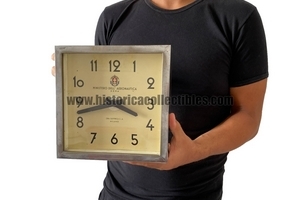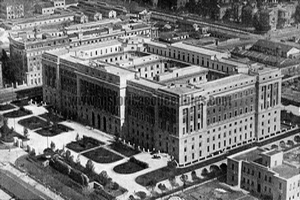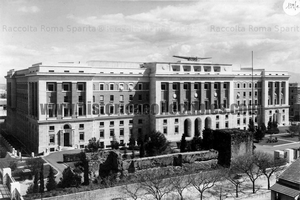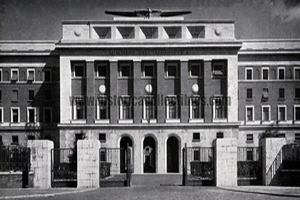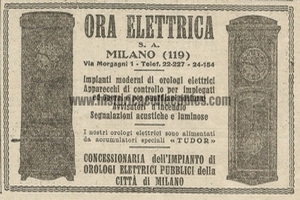Wall Clock "Ministry of Italian Royal Air Force - Rome", circa 1935
Wall clock made by the company "L'Ora Elettrica - Milan", for the "Ministry of Italian Royal Air Force - Rome" around 1935.
There is its rare original mechanism "Reform Breveté Swiss" produced in Switzerland, which adopts a self-winding spring movement with solenoid which, powered by a 4.5 volt battery, reacts to an electric impulse every three minutes.
Perfectly working.
The S.A. Ora Elettrica-Milano, it was founded in the Lombard capital on 15 November 1920 and was a manufacturer of clocks.
On 1 July 1929 the municipality of Milan chose the company to update and improve the city's public time network. The pilot mechanism, regulated by astronomers at the Brera Observatory, transmitted the impulses, via telegraph cables, to others located in the streets and squares.
In 1929 the network, of 100 clocks, needed to be rearranged and on 1 July the Municipality signed an agreement with the company «Ora Elettrica».
In 1931 the public city clocks became 160, a new power station was built in the Gallery, still connected to the Brera Observatory, the service, interrupted only after the bombings of '43, was resumed in 1945. The company produced some orders for the company A. Cairelli-Roma, the only official supplier of watches for the Regia Aeronautica and Regia Marina.
The Ministry of Aeronautics was established on 30 August 1925 with the r.d.l. n. 1513, which transformed the commissariat into a ministry. It dealt with the Air Force and civil aviation and brought together all the aeronautical services already under the Ministry of War. Initially it had three general directorates: military personnel and aeronautical schools, civil aeronautical personnel, aeronautical engineering.
Mussolini kept the ministry for himself from 1925 to 1929 and then from 1933 until the end of the fascist regime on 25 July 1943, with a soldier (with the exception of Raffaello Riccardi), appointed undersecretary of state, who was delegated to ordinary management. From 1929 to 1933, Italo Balbo was minister, already undersecretary since 1926, who gave a notable impetus to the establishment of aviation.
The ministry building, which is located close to the University City and Termini Station, consists of the historic Palazzo Aeronautica. Designed in 1929 by engineer Roberto Marino and inaugurated in 1931, completed by the building of the former Air War School, the Air Force Officers' Club building, and the E.S.T.O. Building. (Operational Technical Services Building) built in the eighties.
The last minister was, in the first government of the republic (De Gasperi II), Mario Cingolani, until with decree nº17 of the provisional head of state of 4 February 1947, the De Gasperi III Government ordered its unification together with the Ministry of War and to the Ministry of the Navy in the new Ministry of Defence, which retained the General Directorate of Civil Aviation and Air Traffic until responsibilities for civil aviation went to the Ministry of Transport and Civil Aviation in 1963.

